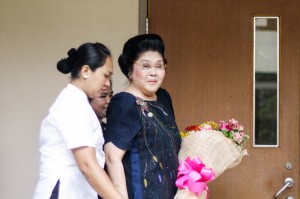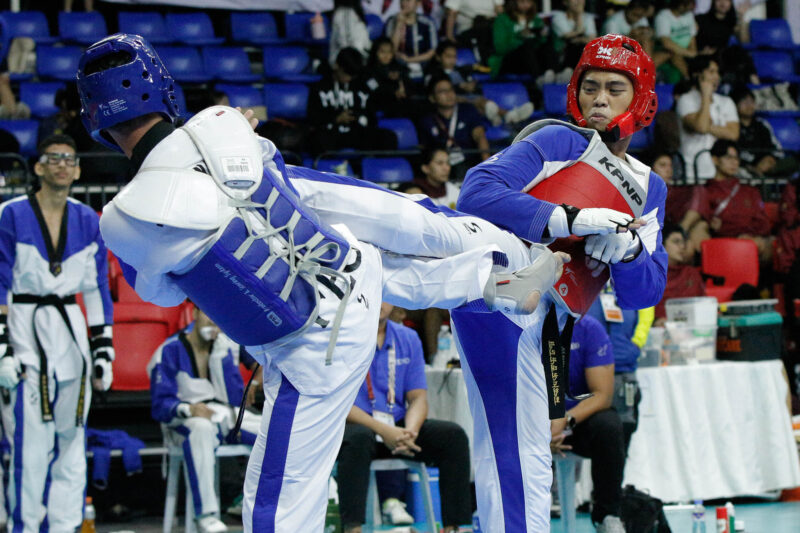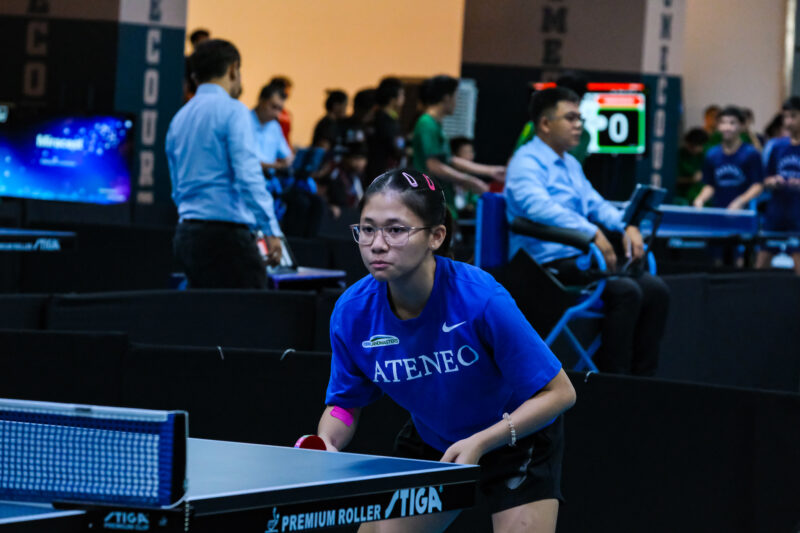“Excellence endures.”
So went the theme of the 40th anniversary celebration of the Ateneo Scholarship Foundation, Inc. (ASF). In many respects, it was a fairly low-key event—some food, some small talk. Not a lot of people even knew that there would be an event in the Loyola Schools’ (LS) campus on the 5th of July. Some of those who graced the celebration, however, were anything but low-key.
One of those guests was former First Lady Imelda Marcos. Pictures of the LS’ past valedictorians with Marcos made their rounds in social media. In fact, the pictures involved them doing some of the more popular poses around. They had posed with her like she was their friend. A flurry of likes–out of courtesy, out of habit, out of genuine appreciation–followed.
Then came the real reaction.
People were shocked. This was a dictator’s wife—and a dictator in her own right, they said. Questions arose: What is the ASF? What was the event? Why was Marcos there? Most importantly, why did these students pose with her?
Professors, students and outsiders weighed in. There were those who thought that we should live, let live and thank Marcos for her generosity in providing money for the foundation. Others felt that the whole incident dishonored the scores who fought and died for our freedom. People were angry; arguments and allegations were thrown left and right.
The backlash had begun.
Value judgments

GUEST OF HONOR? Imelda Marcos is accompanied to the Ateneo Scholarship Fund event at the PLDT-CTC. Photo by Alexandra L. Huang
“The valedictorians should have refused,” is what Leloy Claudio, a Political Science assistant professor, thinks of the incident. “[It] saddens me that our top graduates could be so cavalier about an issue as sensitive as the rehabilitation of Imelda Marcos’ image.” Much of the ire has been directed at the three Ateneo valedictorians present at the event, who posed with Marcos in pictures.
All of the valedictorians who were present at the event were unresponsive to requests for an interview.
One scholar–who declined to be identified–defended his actions, saying that taking a picture with Marcos did not mean historical amnesia. He further alleges that much misinformation was spread about the issue, such as Marcos being the only benefactor of the scholars.
His intention, he claims, was simply to show his gratitude for his scholarship and “dahil sa ‘celebrity’ state ni Imelda (because of Imelda’s celebrity status).”
“I’ve learned my lesson,” he admits, and he hopes that others have as well.
Another scholar, who also refused to be named, recalls how she felt about Marcos’ attendance. She says she was “overwhelmed” to be in the company of guests like Marcos, journalist Jing Castañeda and Ateneo Alumni Scholars Association founder Fr. Bill Kreutz, SJ.
The scholar also adds that she “didn’t notice anyone who was forced to take a picture with [Marcos],” which is contrary to a disclaimer that not all pictures were “voluntarily taken.” (Editor’s Note: As of the publication of this article, the disclaimer, as well as the pictures with Marcos, have been removed.)
Whether or not the pictures are the products of coercion, however, the incident has people asking serious questions.
“How do we help students, as part of their formation, to see moments when they are uncomfortable or uncertain as opportunities to resist being co-opted and to be clear that they are not comfortable with certain roles?” reflects Michael Liberatore, an instructor in the Theology Department. “Do we need to teach new forms of resistance, given that the lines are not as clearly drawn as they may have been during Martial Law?”
However, he also believes that the greater issue is how scholars were put in a compromised position in the first place. The implication of the decision to inviteMarcos, he says, was that showing thanks for the money trumped the need to be consistent with values being taught to students.
To date, no clarification has been made on who exactly made the decision to invite Marcos to the celebration, especially given that the ASF is a separate institution from the university. The ASF has not commented on the matter as of press time.
Remembering the days past
On July 6, Fr. Jose Ramon Villarin, SJ, the president of the university, formally apologized for inviting Marcos to the event . His apology read: “The Ateneo de Manila will never forget.”
By this time, the news—the shaming, the anger—had spread everywhere on social media and other outlets had picked up on it as well. Like all public apologies, Villarin’s words were not enough for some.
“I think it is good that he apologized for the anger it caused and for giving the impression that the Ateneo had forgotten the dark days of Martial Law,” counters Liberatore.
Much of the discussion since then has focused on remembering the Marcos years—article after article, story after story. Most pay homage to those who resisted: People—Ateneans like Edgar Jopson—who were murdered by the dictatorship.
After this incident fades from social memory, however, the welcome outburst of remembrance will likewise disappear. Much of the remembering, then, will be done in places like the classroom, in history classes.
When asked if what happened was an indication of curricular inadequacy, Claudio gives an unsure answer. “I’m not sure. But, definitely, we faculty members should also reflect.” He continues, “I hope that, as faculty members reflect with the broader Ateneo community, we can find ways to strengthen historical memory on campus.” He is nevertheless sure that reflection “will lead us somewhere.”
Liberatore also shows uncertainty. “I am not sure it does reflect on history education.” Nevertheless, he is firmer in his stance. “Given the reaction to the photos and situation, it seems that an awareness of history is alive and well.”
The uncertainty and the desire to do serious reflection is understandable. Despite the tangible scars of the Marcos regime, people continue to hold fast to the belief that Marcos was a noble leader and presided over the “golden age” of the nation. Even though, as Claudio points out, all scholarly evidence points to the opposite, there are still a lot of people left to convince.
Clearly, much has to be done to make sure that the memories endure.
Editor’s Note: Eugene G. Ong is a financial aid scholar. The Ateneo College Scholarship funds 50% of his tuition and fees.
Updated on July 15, 2014 at 7:17 PM.






